Just for Fun
Valuation Considerations of Antique Artwork
I have often talked to groups about the valuation of antique artwork. I do not give monetary appraisals because that is within the realm of an appraiser and I believe that antique dealers have a serious conflict in giving monetary valuations on items that he/she might be interested in purchasing. However, it is my pleasure to offer you the following article about how to value your antique artwork and hope it helps you in any small way:
Valuation of antique portraits & silhouettes depends on several variables including:
Artist Identification
Sitter Identification
Provenance
Rarity
Condition
-
 'Miss Bowes' by Charles Allen DuVal
'Miss Bowes' by Charles Allen DuVal
Artist identification:
A signature of a known artist adds great value. If there are no signatures but you can secure an attribution by an expert to a known artist, the value will increase although not to the height of a signed piece.
In addition to handwritten signatures, many well-collected silhouettists signed their pieces with embossed or impressed signature dies and by pasting a trade label to the back of either the silhouette backing card or the back of the frame. If there is no signature, an artist attribution by a silhouette expert might be possible.
-
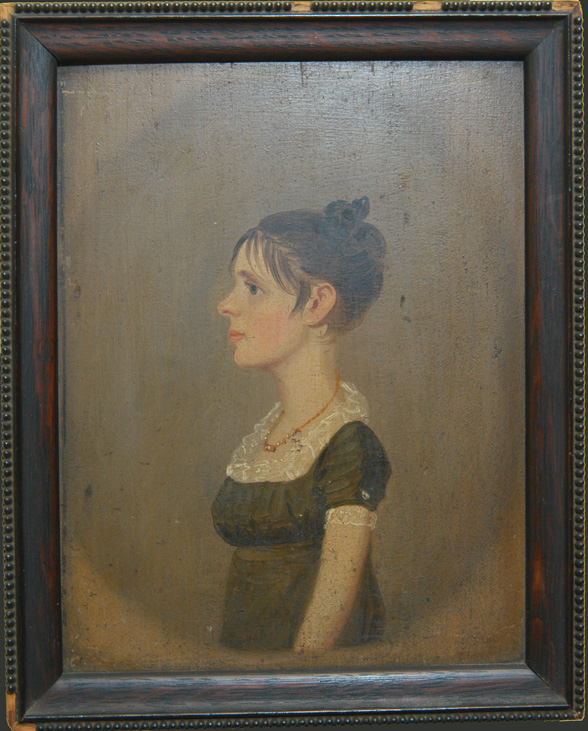 Attributed to Jacob Eichholtz
Attributed to Jacob Eichholtz
-
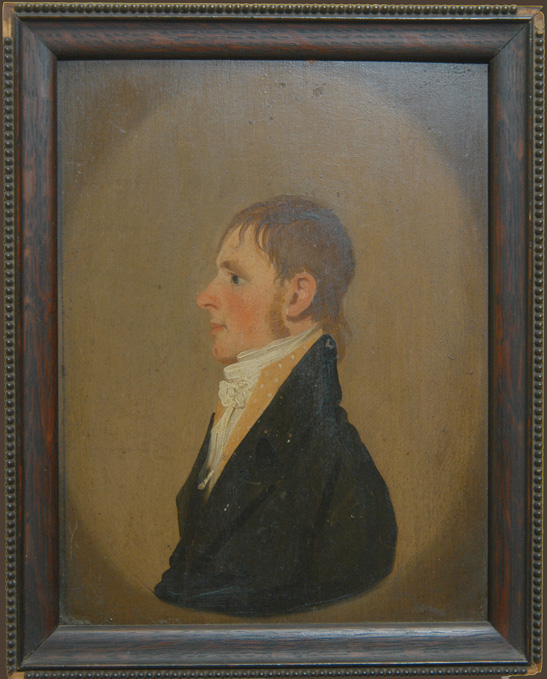 Attributed to Jacob Eichholtz
Attributed to Jacob Eichholtz
Sitter Identification:
If your portrait or profile identifies the name of the sitter and a date, any genealogical information that you can attached to that sitter will make the piece more valuable. But remember that many inscriptions which represent the name of the sitter may have been added by a later descendent and family history is not always accurate.
Provenance:
Who owned it?
Has it been exhibited in a museum?
Did it sell at an important auction?
Has it been published?
Knowledge of all of these things can increase the value.
-
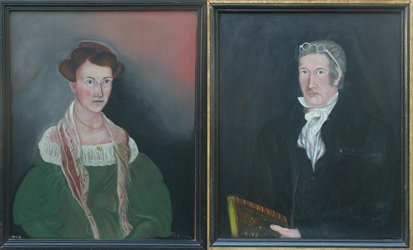 Signed by Asahel Lynde Powers, Sitters Identified,
Signed by Asahel Lynde Powers, Sitters Identified,
Exhibited in Abby Aldrich Rockefeller Folk Art Center
Published & Referenced in Exhibition Catalog & Other Publications
Also important to valuation is the rarity of the piece which can include the follow variables:
Rare artists
Complicated conversation silhouettes & portraits, the more figures the better.
The addition of jewelry for women, backgrounds that include details of family life & pets.
Handpainted or lithographic backgrounds on silhouettes.
Unusual colors used for the silhouette.
Any addition of personal mementoes, such as the addition of arranged hair to the front or back.
Any jewelry or snuff box.
-
 Silhouette of David A. Sayre,
Silhouette of David A. Sayre,
Lexington, Kentucky,
Signed by Both Sayre & Edouart
Condition:
Is the paper browned, stained, foxed, brittle, have tears, creases or holes?
Does the artwork have repaint, scratches, restoration?
Has the original artwork been laid down onto something or has it been taped?
Is the frame original and what is its condition?
In the case of a portrait miniature, is the ivory cracked?
Any antique in good untouched condition is worth more than one that has had had restoration. But poor condition will drive the value down and sometimes good but judicious conservation can bring value back up, although not as high as an untouched piece that can be enjoyed without work.
-
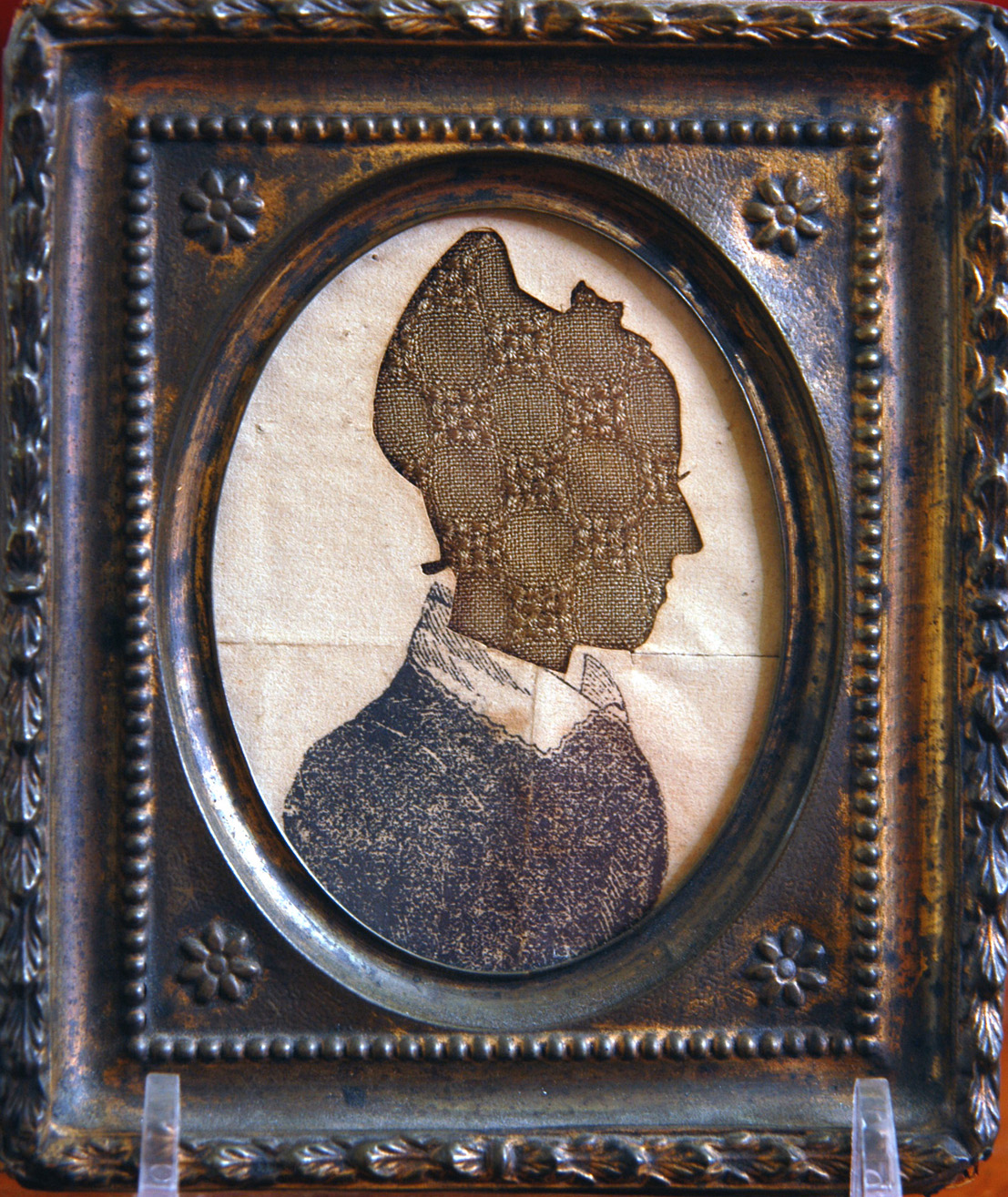 Rare Silhouette with Block Printed Body Showing Original Condition Problems
Rare Silhouette with Block Printed Body Showing Original Condition Problems
Then How Simply Turning The Fabric Made Condition More Palatable -
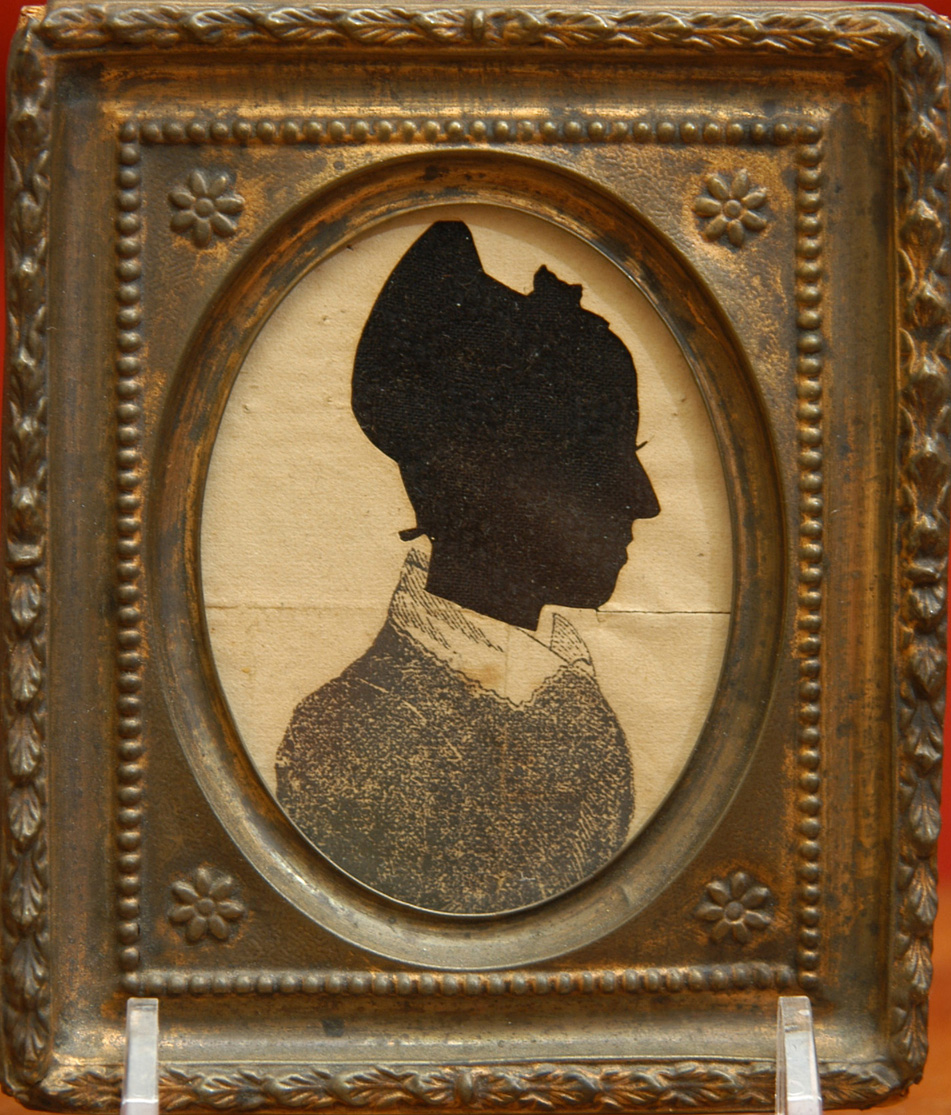
-
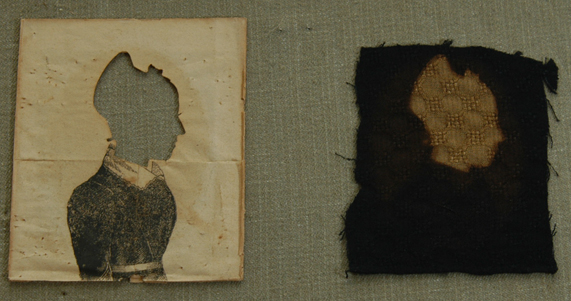 Rare Silhouette with Block Printed Body Showing Original Condition Problems
Rare Silhouette with Block Printed Body Showing Original Condition Problems
Then How Simply Turning The Fabric Made Condition More Palatable
Everyone of us can be burned. I'm a very experienced buyer and dealer and I've recently been burned by a dealer that I will not name. However, let's just say the dealer handed out more abuse than you could possibly imagine....all after she admitted that her representation that the item in question was in "excellent condition" and had "no restoration" was false because she, herself, had it restored and agreed to refund my money. It was a truly bizarre and unpleasant experience that can happen to anyone.
For everyone, I have these warnings about buying:
1. Know who you buy from and that they are honest. Think about the following characteristics of the dealer;
a. Does the seller guarantee her/his inventory and is the seller’s business funded so that she/he can come up with the money if you find out down-the-line about misrepresentations made by that seller, regardless as to whether the misrepresentation was blatant or an unfortunate mistake. There is a real difference between a “refund policy” that assumes that the piece sold is as it was represented, and what the seller is willing to do if misrepresentations are discovered. Ask up front how the seller would handle future discoveries of misrepresentations;
b. What credentials does the seller really have?
i. If a seller has never had a bricks & mortar antiques shop, never done shows, and this person only sells on a third-party website (i.e. ebay) or even has his/her own nice looking website, then chances are that dealer has never really had face-to-face interactions with potential clients, other dealers within the industry, museum personnel, etc.
ii. There is a major difference between having the ability to answer questions when they are asked in person and having the luxury and time to research every question online before answering. Yes, I research a lot of the questions you ask me, but I also have had years of face-to-face time in which I answered questions from my knowledge on a subject (although I’m never afraid to say “I don’t know but I can probably find out”).
iii. Does this seller have a resume that includes education in the field in which that person sells? Has the seller ever presented educational talks to informed groups or published any educational articles?
iv. While I’m not saying you shouldn’t buy from anyone who only sells via website or on ebay, the above are all important considerations and should be part of your decision regarding the amount of money you are willing to spend with this person. How experienced you require the seller to be might be different if you are spending $100 or $1000 or $10,000;
2. Always ask for a condition report when you are buying online. I made a serious mistake in taking for granted that “excellent condition” with “no restorations” meant what it said. When asking for condition reports, ask for the general condition but also ask about issues that are of particular importance to you—such as restoration, whether paper or canvas is laid down onto anything, are their cracks in ivory, tears in paper, holes in canvas.
3. While asking for a condition report, also ask to see larger format photos so you can see the piece in detail. Putting really large photos on a website slows download time tremendously and creates a cumbersome website. However, the seller will probably have larger format photos that can be emailed directly to you.
3. There are many reputable dealers and hundreds of wonderful pieces advertised on ebay and in similar markets. It is fun and adventurous to look for treasures in shops, at shows, in flea markets and estate sales, and on the Internet. I am certainly not saying you should limit your choices and only buy from certain dealers. Instead, be aware of the things that can go wrong. Anticipate them and try to find out what would happen in a worst-case event. You should be wary of paying as much on ebay-type markets as you would from a dealer or an auction house that you know and trust. With a little forethought and purposeful inquiry you can dramatically increase the chance that, when you do lay out your hard-earned money on a new and exciting treasure, your transaction will be one that you are happy with for a very long time.
